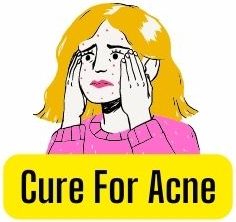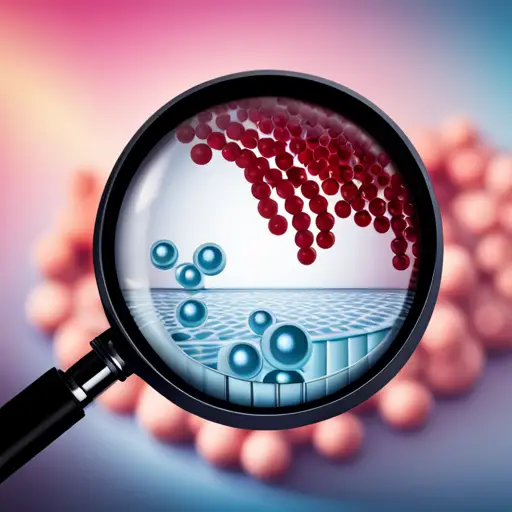Acne, a common skin condition affecting millions of individuals worldwide, has long been associated with hormonal changes and imbalances within the body.
The impact of hormones on acne development is multifaceted: adolescence sees an increase in hormone production, contributing to the prevalence of acne during teenage years; women experience cyclical fluctuations in hormone levels throughout their lives, resulting in premenstrual or pregnancy-related acne breakouts; and underlying health conditions affecting hormone balance can exacerbate or trigger persistent acne issues.
As such, understanding the intricate relationship between hormones and acne is essential for developing effective treatment strategies and regaining control over one’s complexion.
In this article, a comprehensive examination of the link between hormones and acne will be conducted through an exploration of various aspects related to hormonal imbalances and their effects on skin health.
Firstly, an overview of key hormones implicated in acne development will be provided alongside an explanation of their functions within the body.
Subsequently, potential causes for hormonal imbalances will be discussed followed by an analysis of how these imbalances contribute to the emergence and persistence of acne lesions.
Furthermore, methods for identifying and diagnosing hormonally-driven acne will be detailed as well as available treatment options aimed at addressing both hormonal fluctuations and visible skin manifestations.
By delving deeply into this complex interplay between hormones and skin health, readers may find themselves better equipped to understand their own struggles with acne while taking informed steps towards achieving clear skin free from hormonal disruptions.
Key Takeaways
– Hormones play a significant role in acne development, with androgens being key players.
– Hormonal imbalances caused by various factors can lead to acne, including stress, poor nutrition, and medical conditions.
– Diagnosis of hormonal acne involves assessing medical history and possible underlying health conditions, with treatment options ranging from topical treatments to oral medications and dietary changes.
– Preventing and managing hormonal acne requires a commitment to addressing underlying causes and individual needs, including maintaining a healthy lifestyle and skincare routine.
Understanding Hormones and Their Functions
Delving into the complex world of hormones and their functions is crucial for comprehending the intricate relationship between these chemical messengers and acne development.
Hormones are produced by the endocrine system, a network of glands distributed throughout the body that secrete specific hormones directly into the bloodstream to regulate various physiological processes. These processes include growth and development, metabolism, immune function, reproduction, stress response, and mood regulation.
The endocrine system works in tandem with the nervous system to maintain homeostasis – a stable internal environment despite external changes – through a delicate balance of hormone production and release.
Hormone regulation is achieved through complex feedback mechanisms involving multiple organs and tissues in order to maintain optimal levels of each hormone within narrow limits.
Hormonal imbalances can have significant consequences on overall health as well as specific conditions such as acne. For instance, key players in acne pathogenesis are androgens – male sex hormones that regulate sebum production in both males and females.
Androgens stimulate sebaceous gland activity which results in an increased production of skin oil (sebum), leading to clogged pores and proliferation of acne-causing bacteria.
Understanding how hormone regulation affects various biological systems allows for better comprehension of its role in skin health, paving the way for developing targeted treatments aimed at restoring hormonal balance to alleviate or prevent acne breakouts.
Causes of Hormonal Imbalances
Egregiously, hormonal imbalances can be attributed to a myriad of factors, including stress, poor nutrition, and certain medical conditions.
Endocrine disruptors, for example, are synthetic chemicals or natural compounds that interfere with the normal functioning of the endocrine system and subsequently lead to hormonal imbalances.
These substances can be found in everyday products such as plastics, pesticides, and personal care items.
Furthermore, stress impact on hormone levels cannot be understated; chronic stress leads to elevated cortisol levels which may result in an imbalance between estrogen and progesterone hormones.
Additionally, poor nutrition plays a significant role in disrupting hormonal balance by affecting the synthesis and regulation of these vital biochemical messengers.
Medical conditions affecting the endocrine glands are also major contributors to hormonal imbalances. Polycystic ovary syndrome (PCOS), thyroid disorders like hypothyroidism or hyperthyroidism, adrenal insufficiency (Addison’s disease), Cushing’s syndrome caused by excess cortisol production from the adrenal glands – all these conditions directly influence hormone production and regulation pathways leading to imbalances.
Furthermore, certain medications prescribed for various illnesses can have adverse effects on hormone levels as well; for instance, corticosteroids used in treating inflammation may cause an increase in cortisol levels while birth control pills affect estrogen and progesterone balances.
Therefore it is crucial to monitor one’s overall health status through regular checkups with healthcare providers who can assess potential risks associated with hormonal imbalances and recommend appropriate interventions if necessary.
Hormonal Imbalances and Acne Development
A complex interplay between hormonal imbalances and acne development has been observed, shedding light on the multifaceted nature of this common skin condition.
Hormonal triggers, such as an increase in androgens like testosterone, can lead to increased sebum production, which may contribute to the clogging of hair follicles and subsequent formation of acne lesions.
The stress connection is another factor that has been linked to both hormonal imbalances and acne development, with studies showing that stress can exacerbate existing acne by increasing cortisol levels in the body.
Additionally, other hormones such as insulin-like growth factor-1 (IGF-1) and insulin have been implicated in acne development due to their roles in stimulating sebaceous gland activity and promoting inflammation.
Furthermore, polycystic ovary syndrome (PCOS), a condition characterized by elevated levels of male hormones called androgens, has also been associated with a higher prevalence of acne.
To better understand these relationships, a table summarizing some key factors involved in hormonal imbalances and acne development is provided below:
| Factor | Effect on Acne Development |
|---|---|
| ———————— | ————————————————————- |
| Androgens | Increase sebum production; stimulate hair follicle growth |
| Stress Connection | Increase cortisol levels; exacerbate existing acne |
| Insulin-like Growth Factor-1 (IGF-1) | Stimulate sebaceous gland activity; promote inflammation |
| Insulin | Promote inflammation; increase sebum production |
| Polycystic Ovary Syndrome (PCOS) | Elevated androgen levels; higher prevalence of acne |
In conclusion, the link between hormones and acne is multifactorial as various hormonal pathways interact to influence sebum production, inflammation, hair follicle growth, and overall skin health.
Understanding these connections can help pave the way for more targeted treatment approaches for individuals suffering from hormonally-driven acne, ultimately providing a sense of freedom from this burdensome skin condition.
Identifying and Diagnosing Hormonal Acne
In the realm of dermatology, the intricate task of identifying and diagnosing hormonal acne emerges as a critical step in addressing this pervasive skin ailment.
Hormonal acne triggers primarily involve fluctuations in hormone levels, particularly androgens such as testosterone, which can lead to increased sebum production, inflammation, and subsequently clogged pores.
Identifying hormonal acne typically involves an assessment of the individual’s medical history, location of breakouts (characteristically along the jawline, chin, and lower cheeks), age (adolescents or adults experiencing hormonal imbalances), menstrual cycle patterns for females, and possible underlying health conditions such as polycystic ovary syndrome (PCOS).
Additionally, dermatologists may employ diagnostic tools like blood tests to measure hormone levels for a comprehensive evaluation.
To manage hormonal acne effectively, it is imperative to tailor skincare routines that address the specific needs of individuals with this condition.
Evidence-based treatments include topical retinoids to unclog pores and reduce inflammation; benzoyl peroxide or salicylic acid for their antibacterial properties; oral contraceptives or anti-androgen medications for women presenting with hormonally-driven acne; and lifestyle modifications such as stress reduction techniques and dietary changes aimed at reducing inflammation.
However, it is crucial for patients to consult with healthcare professionals before embarking on any treatment regime to ensure its safety and efficacy.
By accurately diagnosing hormonal acne through a detailed assessment process and implementing targeted skincare routines based on scientific evidence, individuals have an opportunity to regain control over their skin health and achieve freedom from persistent breakouts.
Treatment and Prevention Options for Hormonal Acne
Navigating the complex landscape of hormonal acne treatment and prevention options requires a thorough understanding of evidence-based approaches, as well as a commitment to addressing underlying causes and individual needs in order to restore skin health and bolster self-confidence.
A comprehensive approach often involves a combination of topical treatments, oral medications, lifestyle modifications, and dietary changes that target hormone regulation, inflammation reduction, and improved skin care habits.
Topical treatments such as benzoyl peroxide, salicylic acid, retinoids, and azelaic acid have proven effective in managing mild to moderate hormonal acne by unclogging pores, reducing inflammation, accelerating cell turnover rates or killing bacteria on the skin’s surface.
Oral medications like combined oral contraceptives (COCs), anti-androgen drugs (e.g., spironolactone), antibiotics or isotretinoin may be prescribed for more severe cases with an emphasis on regulating hormones or decreasing sebum production.
Dietary changes can also play a significant role in preventing hormonal acne flare-ups by supporting overall hormonal balance and promoting internal wellness.
Research has pointed towards certain nutrients such as omega-3 fatty acids found in fish oil supplements or foods like salmon potentially having beneficial effects on hormonal acne due to their anti-inflammatory properties.
Additionally, diets rich in antioxidants from fruits and vegetables may help protect the skin from oxidative stress which exacerbates inflammation associated with acne breakouts.
Consuming low glycemic index foods (i.e., whole grains) rather than high glycemic index foods (i.e., refined sugars) can help regulate insulin levels which may indirectly impact hormone balance related to sebum production.
Furthermore, maintaining adequate hydration is essential for optimal skin health; water intake should be sufficient to support proper organ function but not excessive so as not to overwhelm the kidneys.
In conclusion, an integrative approach utilizing evidence-based topical treatments alongside strategic dietary adjustments tailored to individual needs is crucial for successful management of hormonal acne whilst fostering a sense of empowerment and freedom from its debilitating effects.
Frequently Asked Questions
Can certain foods or dietary habits contribute to hormonal imbalances and acne development?
Research suggests that certain food triggers may contribute to hormonal imbalances, potentially exacerbating acne development. A focus on gut health and a balanced diet can be pivotal in managing such skin conditions effectively.
How do stress levels impact hormone production and acne breakouts?
A study revealed that 71% of acne patients reported stress as a factor exacerbating their condition. Stress management is crucial in mitigating acne triggers, as heightened stress levels disrupt hormone production, leading to breakouts.
Are there any natural remedies or lifestyle changes that can help balance hormones and prevent acne?
Hormone friendly skincare and natural acne fighters, such as proper nutrition, exercise, and stress reduction techniques, can contribute to balanced hormone levels and reduced acne breakouts when incorporated into daily routines.
How does the menstrual cycle or menopause affect hormone levels and acne in women specifically?
Menstrual acne triggers often result from hormonal fluctuations during the menstrual cycle, while menopause skincare addresses age-related hormonal changes. Both instances necessitate evidence-based, personalized approaches to maintain skin health and prevent breakouts.
Can hormonal acne be a sign of an underlying health issue or condition that requires medical attention?
Hormonal acne may signal underlying health issues requiring medical attention, as it often serves as an indicator of hormonal imbalances. Acne treatment options should be explored alongside addressing potential root causes.
Conclusion
In summary, the symbiotic relationship between hormones and acne elucidates the significance of maintaining hormonal harmony for optimal skin health.
Acknowledging the array of factors contributing to hormonal imbalances enables individuals to adopt appropriate preventative measures and treatments, thus mitigating the manifestation of acne.
Conclusively, comprehending the correlation between hormones and acne allows for targeted treatment approaches that address more than mere external symptoms.
Delving deeper into dermal dilemmas through an understanding of underlying hormonal factors paves a path towards healthier skin and improved self-esteem.





